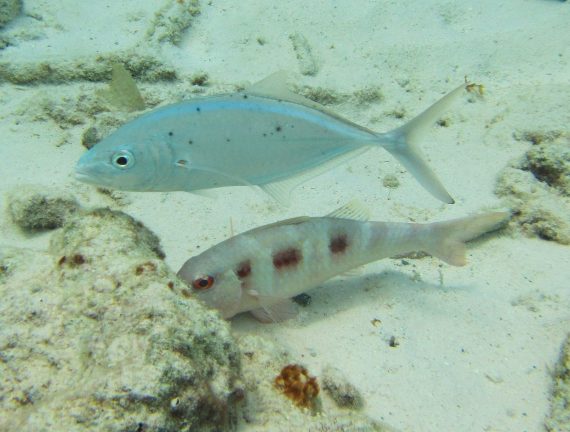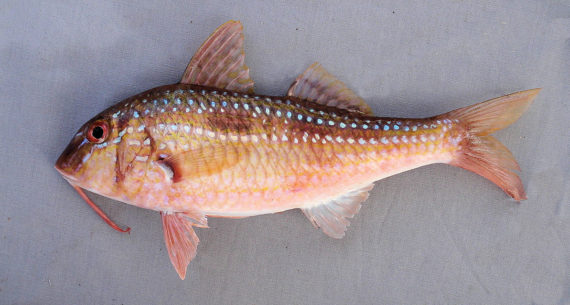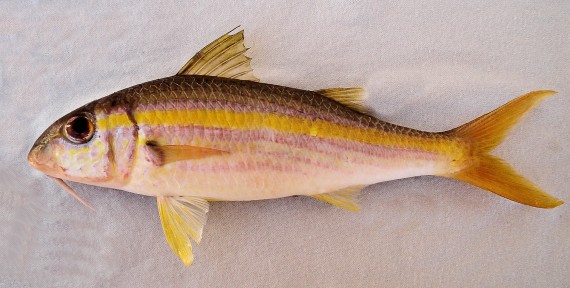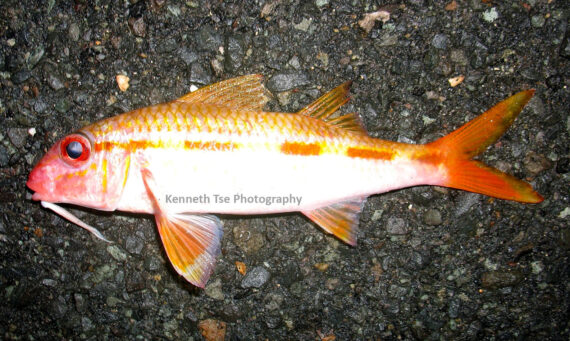The Goatfish Family – Mullidae
There are currently FOUR members of the Goatfish or Mullidae Family, one from the Atlantic Ocean and three from the Pacific Ocean, presented in this website:
FROM THE ATLANTIC (1)
FROM THE PACIFIC (3):
The Goatfish or Mullidae Family has fitty-five global members of which are in six general of which five are found in Mexican waters, two in the Atlantic Ocean and three in the Pacific Ocean. They are known in Mexico’s fishing areas as chivos. They are small to moderately-sized fish with the largest being 55 cm (21.7 inches) in length; most are about half that size. They are a circumglobal, tropical, and subtropical family and are found in the Atlantic, Indian, and Pacific Oceans.
Goatfish have elongated slightly compressed bodies. They are brownish, golden, orange or red with juveniles being sandy or blue in color. Their bodies have colored markings including longitudinal bands or stripes in black, brown, orange, red or yellow and colored spots or blotches. Their fins may have bands, stripes or bars. Most Goatfish species can be differentiated by their color. The undersides of their head and belly are flat and they have 2 long barbels on their chin, a key to identification. Their eyes are set high on the head; they have a small mouth that is protrusible and features small villiform or conical teeth. Their caudal fin is forked. They have 2 widely spaced dorsal fins, the first with 7 or 8 spines and the second with 1 spine and 8 soft rays and large pelvic fins located just before the pectoral fin base. They are covered with large rough scales.
Goatfish are benthic and live in coastal waters at depths up to 107 m (350 feet). Their barbels have sensory organs utilized for finding food, which consists mainly of small bottom-living animals such as crustaceans, mollusks, worms, and other small invertebrates. During the day, Goatfish form large non-feeding schools commingling with other species and can change color to blend into the school. At night, they feed as individuals. Males also use their barbels to attract females during courtship. When not in use, the barbels are tucked tightly under the chin. They are pelagic spawners releasing buoyant eggs that travel the currents until hatching. The Goatfish, in general, are poorly studied with very limited information available about their lifestyle and behavioral patterns including specific details on age, growth, longevity, movement patterns, diet, habitat use, and reproduction.
Goatfish are valued food fish in many countries. In ancient Rome, two species of Goatfish were sought-after and deemed to be a delicacy for aesthetic pleasure, since the fish have a variety of colors. Being served alive, the fish would change into various shades as they died before the eyes of the guests.



